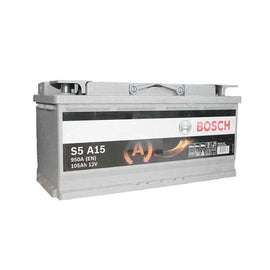Your car's engine oil needs to be topped up regularly to keep your car running smoothly. The oil is required to lubricate the engine and ensure it's working properly. If it starts to get low, it can cause all sorts of problems for your car. Fortunately, checking and topping up your engine's oil is something that you can do yourself. In fact, it's one of the easiest things that you can do and it's an essential piece of knowledge for anyone who owns a car. Knowing how to check the oil level and how to top it up to the right amount will help you to keep your car healthy.
Use this guide to learn how to check and top up your engine oil so you can do it yourself and maintain your car.
How Often Should You Check Your Engine Oil?

Checking your car's engine oil regularly is a must. Many experts will tell you that you should check it at least once a month and possibly more often. If you're about to go on a long journey, it's also important to check before you go, especially for older cars. If you're not sure, check your manufacturer's recommendations, where it should give you a good idea of how often you should be checking the oil level along with the correct oil to use for your car;s engine.
Getting Started
Before you check your car's engine oil, make sure you're parked on a level surface. This will make sure that the oil level reading is as accurate as possible. It's also important to have your car turned off for at least ten minutes before you take a look at the oil level, both for safety and to get a more accurate reading. You'll need to have a bottle of engine oil, a funnel, and preferably something to clean up with, whether it's a cloth or paper towels.
Check Your Manual

Your owner's manual will give you several handy pieces of information. It will let you know how often you should check, top-up, and change your oil. It will also tell you if your car has an electronic oil level monitor, which is a feature in many modern cars. If it does, you can check your oil level through the car's dashboard without having to lift the bonnet.
If there's no electronic monitor in your car, you'll have to check the oil level manually. Fortunately, this is pretty easy to do. Your manual will also tell you where to find the dipstick.
Manually Checking Oil Level

The first thing that you need to do to manually check the oil level is to locate the dipstick. It's usually a tab or handle on the side of the engine that's brightly colored. Check your owner's manual if you can't find it. Take out the dipstick and wipe it clean using a cloth or paper towel to remove any residue. Find the minimum and maximum markings on the dipstick and take note of where they are.
Now, check the oil level by putting the dipstick back where you found it. Push it all the way down and then pull it back out. The line where the oil comes up to on the dipstick is the oil level. If the oil is between the minimum and maximum markings, you have the right amount of oil in your engine. If it's at or close to the minimum mark, you need to top it up. If it's over the maximum, you will need to drain some oil. It's also a good idea to have your car looked at by a professional.
Topping Up Your Engine Oil

If your dipstick or your electronic monitor shows that your engine oil is below the minimum level (or getting close to it), you need to top it up.
Here's what you need to do:
- First, find the oil filler cap and unscrew it
- Place a funnel inside - while it's not essential to have a funnel, it's much easier and you'll be less likely to spill anything
- Pour in a little bit of oil at a time, checking the dipstick in between to see how far you have filled it. It's best to do it this way to avoid overfilling it. On most cars, the distance between the minimum and maximum markings on the dipstick represents about a liter of oil (about a quarter of a US gallon).
What Oil Do You Need?

The oil that you should be using in your engine depends on the engine itself. Your owner's manual should tell you what type of oil you should be using. If you can't find that information, advice from a mechanic or auto technician or from someone in-store when you're buying oil can help. You can buy the oil that you need in a number of places, including automotive supply stores, gas stations and more.
The Problem with Overfilling

When you're filling up your engine oil, remember that you need to avoid overfilling. Putting in too much oil can cause just as many problems as not having enough engine oil. You might think that more oil is better, but too much oil will put pressure on internal engine components. This can cause blockages, leaks, and other damage that could be costly to repair. Engine wear can occur too and eventually lead to the failure of the engine because the components aren't getting the right amount of lubrication.
Checking and topping up your engine oil should be one of the tasks that you carry out regularly when maintaining your car. It's a good idea to get into the habit of completing maintenance tasks like this, as well as checking coolant levels, testing your tyre pressure, checking your headlights, and more.
Do you need help with your car maintenance or repairs? 800-CarGuru (800-2274878) is the largest auto repair provider in the UAE and is always there for you when you need help keeping your car on the road.





